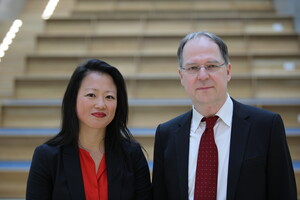Modulation of clinical phenomena and event file coding by repetitive transcranial magnetic stimulation

The supplementary motor area (SMA) and pre‐SMA are active during action selection and preparation predominantly of internally generated movements, switching between different actions and overcoming habitual responses. Binding and unbinding of stimulus and response features and response switching are key elements during event coding, so that SMA and pre‐ SMA activations are expected to be particularly relevant for these processes. Abnormal neural activation related to tics and urges (i.e., the current state) has been documented in the SMA in patients with Gilles de la Tourette syndrome (GTS). Also, a number of studies have shown abnormal structural and functional connectivity in motor networks comprising the SMA and pre‐SMA. In addition, response switching, particularly engaging the pre‐SMA, is impaired in GTS independently of tic severity and has thus emerged as a possible GTS trait marker. In this project, we will test the hypothesis that tics and urges represent state markers of SMA hyper‐activation correlating with abnormal feature binding in the event file paradigm (S‐R) and the action file paradigm (R‐R). The underlying neurophysiological processes will be investigated using EEG during the behavioral tasks, performed before and after inhibitory 1Hz SMA rTMS to modulate brain activation. In a control condition, we will use 1 Hz pre‐SMA rTMS to particularly address response‐switching deficits as a possible trait marker in GTS.

